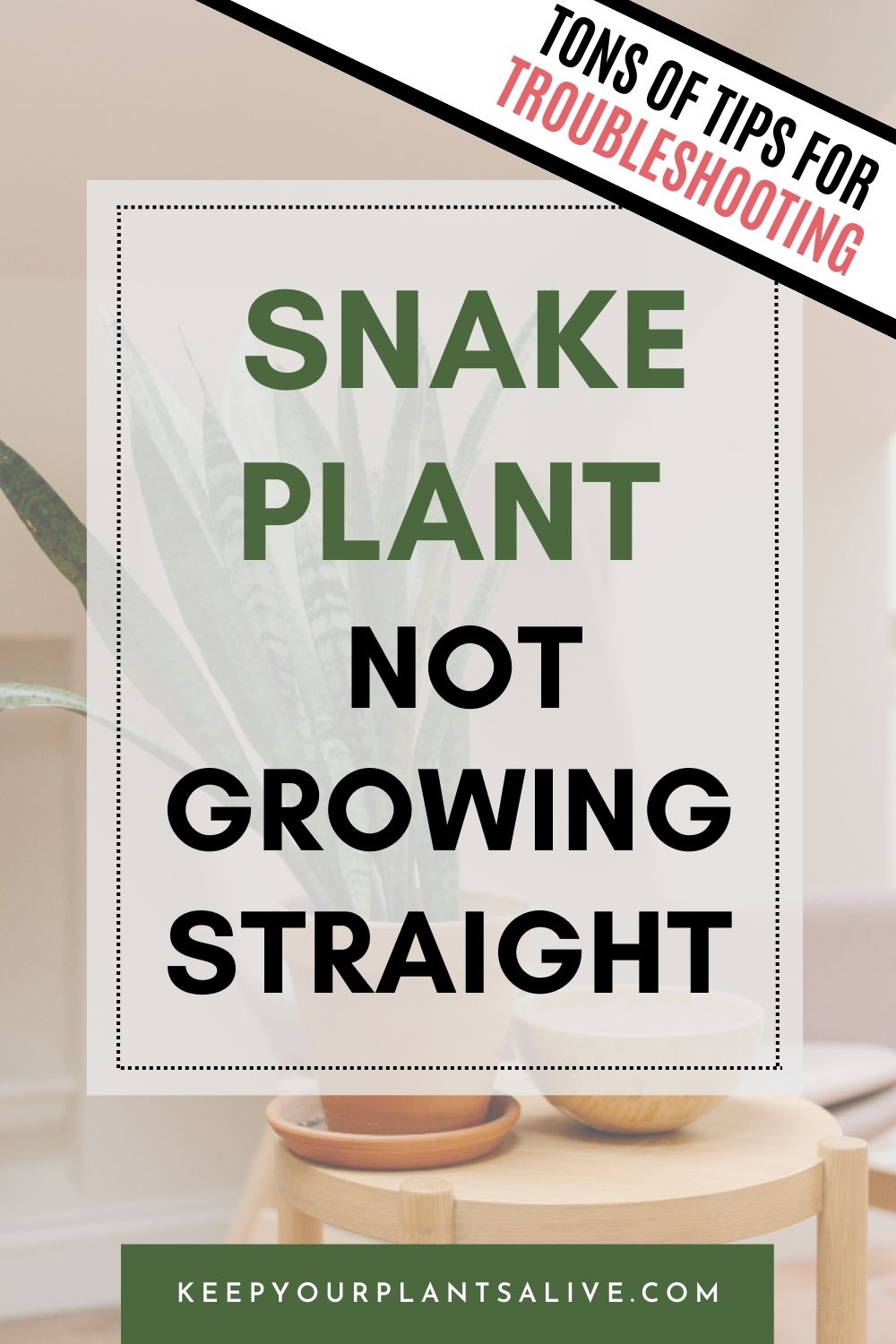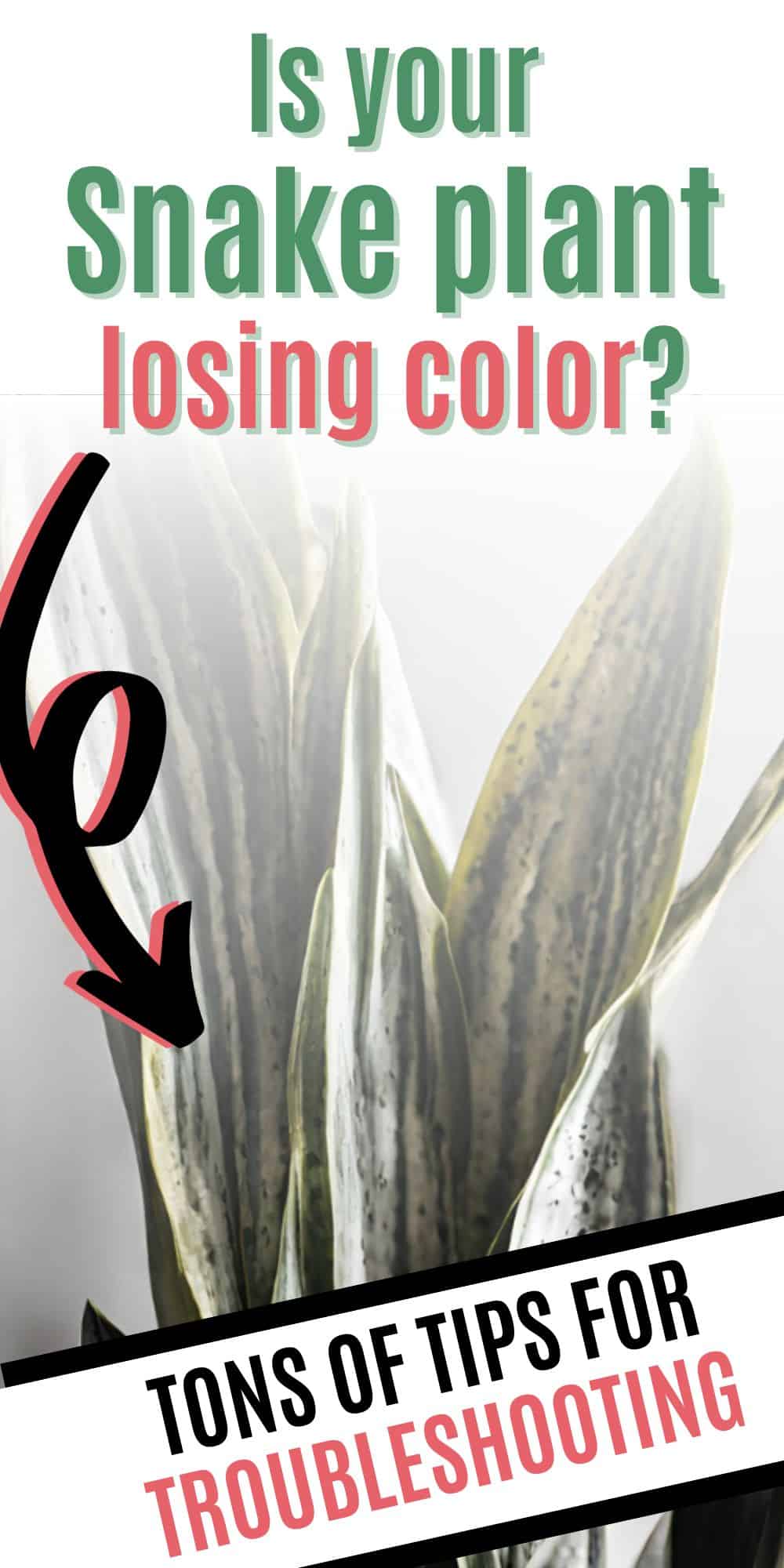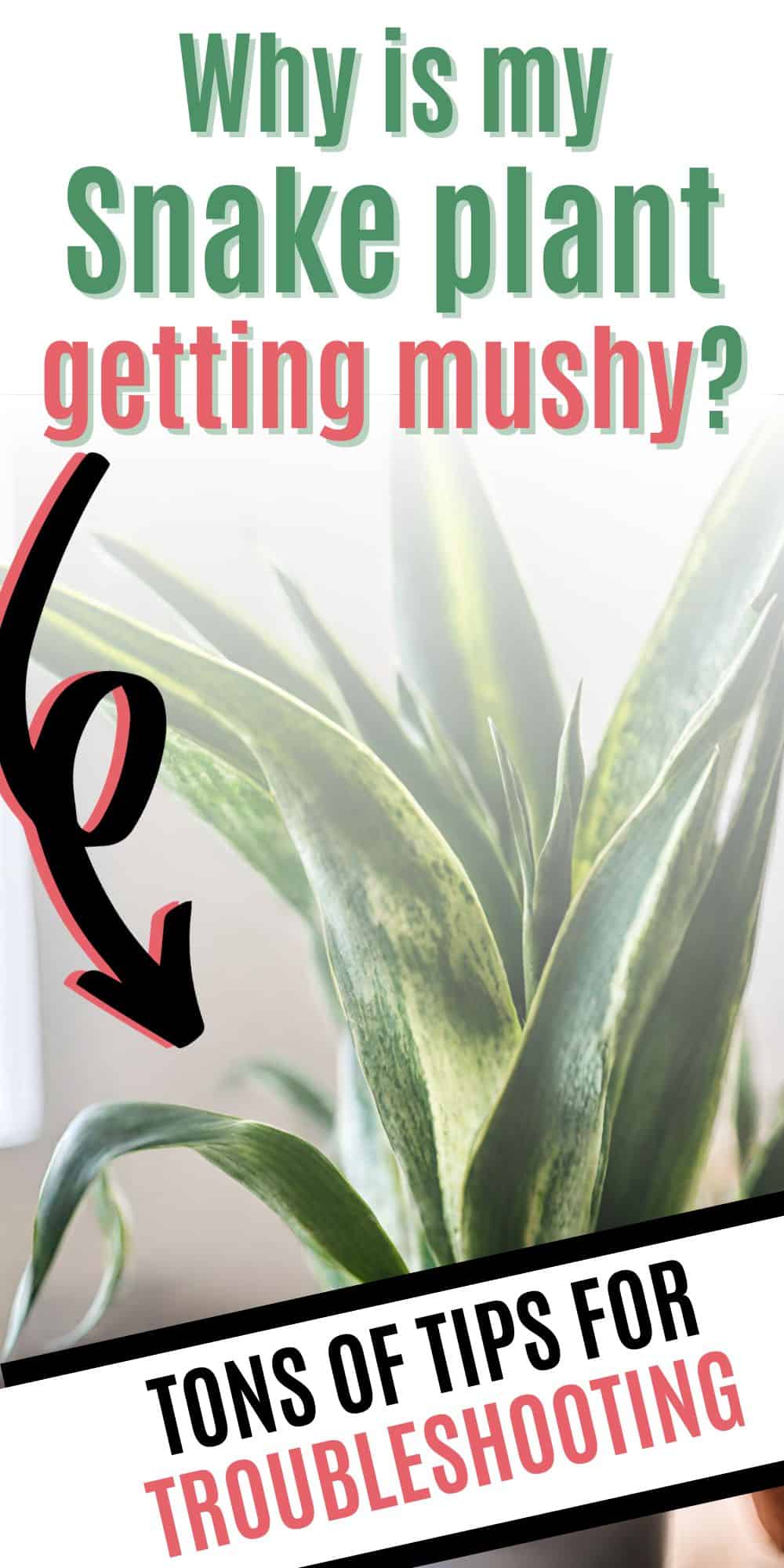Wondering if you should cut brown tips off snake plants? Uncover the best snake plant care practices for maintaining the health and appearance of your resilient houseplant!
Snake Plants, Dracaena trifasciata, formerly Sansevieria trifasciata, are some of the most beautiful and rigorous indoor plants you can come across.
They're not only resilient and adaptable, but also really easy to look after, making them a fantastic pick for your home, especially if you're just starting out with houseplants.
Since trimming damaged leaf tips is a highly debated subject in the world of plants, the answer is both yes and no.
Before we get into more detail, let’s find out why brown tips on snake plants happen in the first place and what you can do to prevent it from happening again.
Let’s jump in.
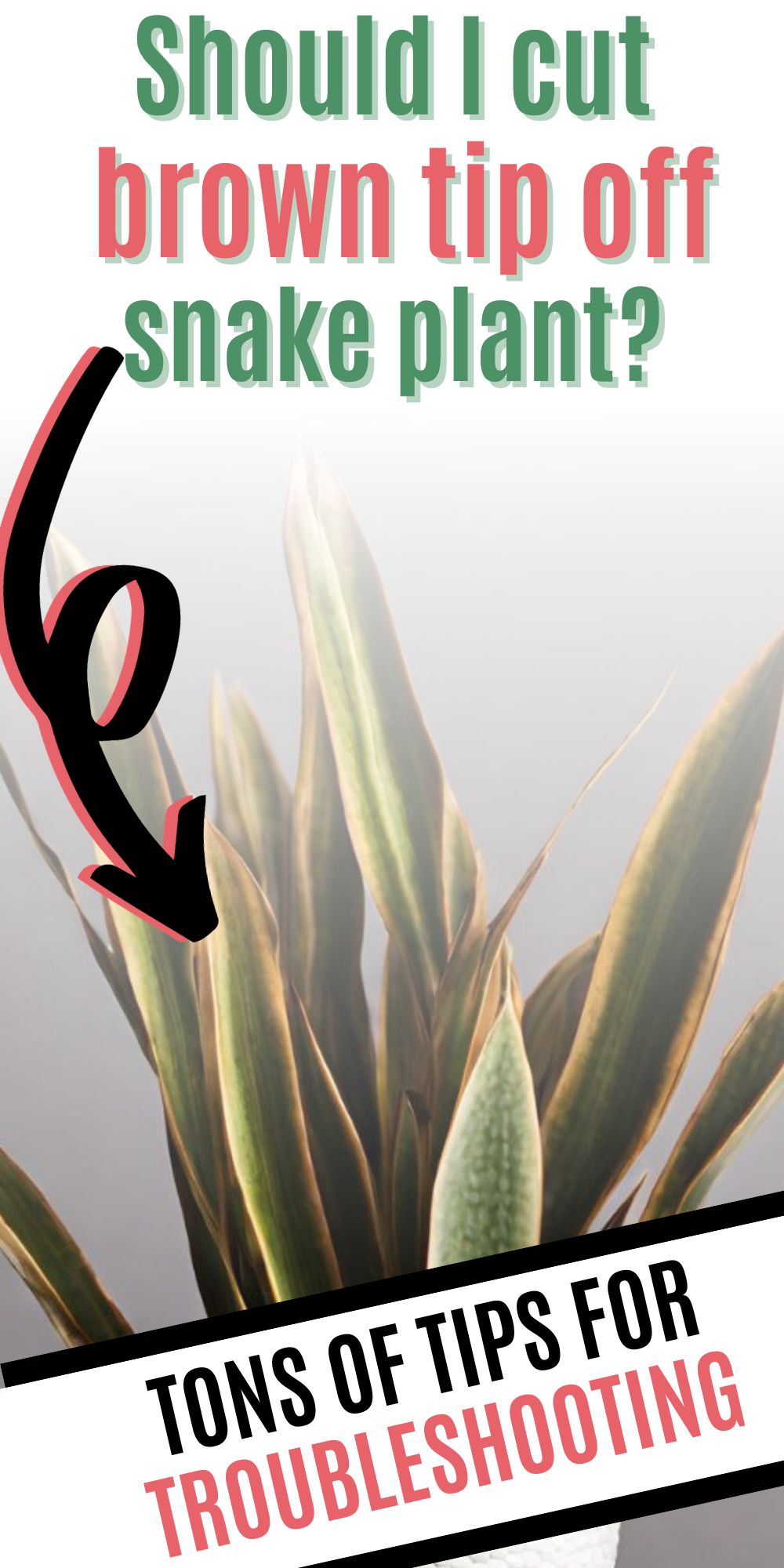
What Causes Brown Tips on Snake Plant?
Plants are pretty smart – they have their ways of telling us when something's not right.
One sign that a snake plant is in trouble is when the tips of its leaves start turning brown.
So, why does this happen? Let's break it down:

Excessive Sunlight
As with most other succulents, snake plants enjoy a bit of direct sunlight every now and then, less so in the summer.
Yet, if they receive a full day of bright, hot, direct sunlight each day, it might be too much for the leaves to handle.
The result? Their leaf tips can start turning a sad shade of brown.
A quick fix is to change the location of the plant to a cool, dry place. Choose a spot that gets no more than three hours of direct sunlight daily.
They’ll do even better if placed in bright, indirect light. In fact, this is a sure way to reduce the chance of leaf browning.
Overwatering
Being succulents, snake plants are adept at storing water and making it last for a pretty long time. That’s why they react badly when overwatered.
To avoid overwatering your snake plant, give the soil time to completely dry between waterings.
To test the soil, place your finger in the soil up to about an inch. If it comes up moist, that means the plant is suffering from overwatering.
Also, make sure the plant’s container has adequate drainage. This allows excess water to drain out of the pot and prevent root rot.
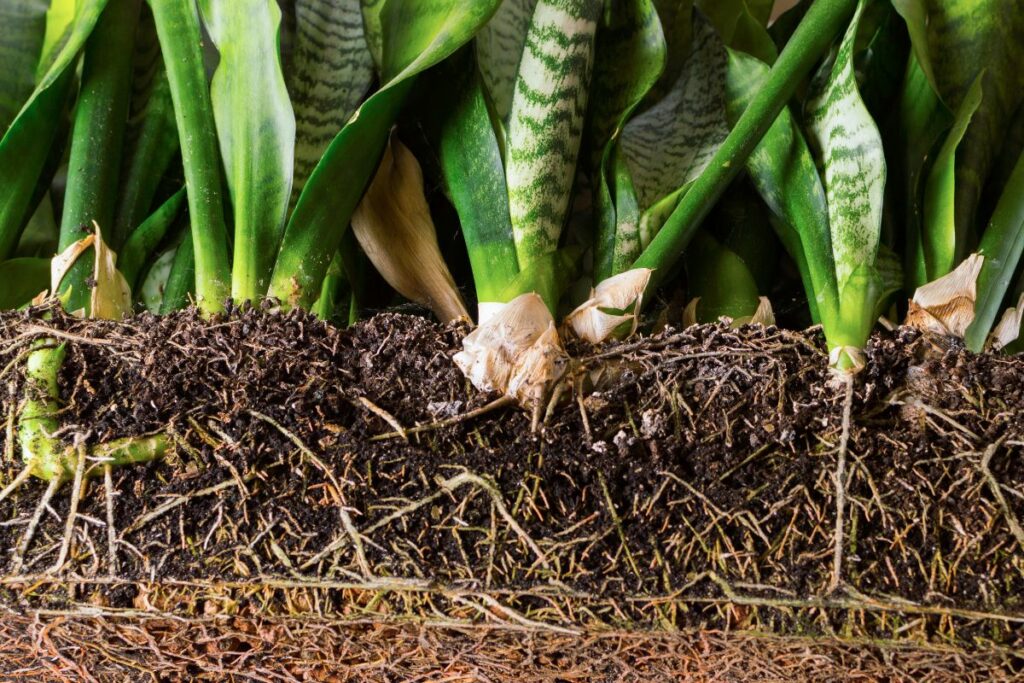
Underwatering
While overwatering is a no-no, you can't just forget about them for weeks on end.
The average watering time for these hardy indoor plants is between 10–14 days, depending on the season.
If you've missed the watering mark and it's been over two weeks, give them a bit more water than usual. Then, set it aside until the extra moisture drains out and the soil completely dries up.
A great tip is to keep track of your watering schedule in a calendar or journal, so you know exactly when your green buddy needs its next drink.

Low Humidity
Even though snake plants are adaptable, they don’t do well in dry conditions.
To find out if your home is on the dry side, you can use a humidity meter.
If the reading is 40% or higher, then you’re probably fine. If the humidity is below 40%, it could be why the tips of the leaves are turning brown.
To avoid this, mist the leaves with a spray bottle once a day. Or, even better, place a humidifier nearby to give it that extra bit of moisture it loves.
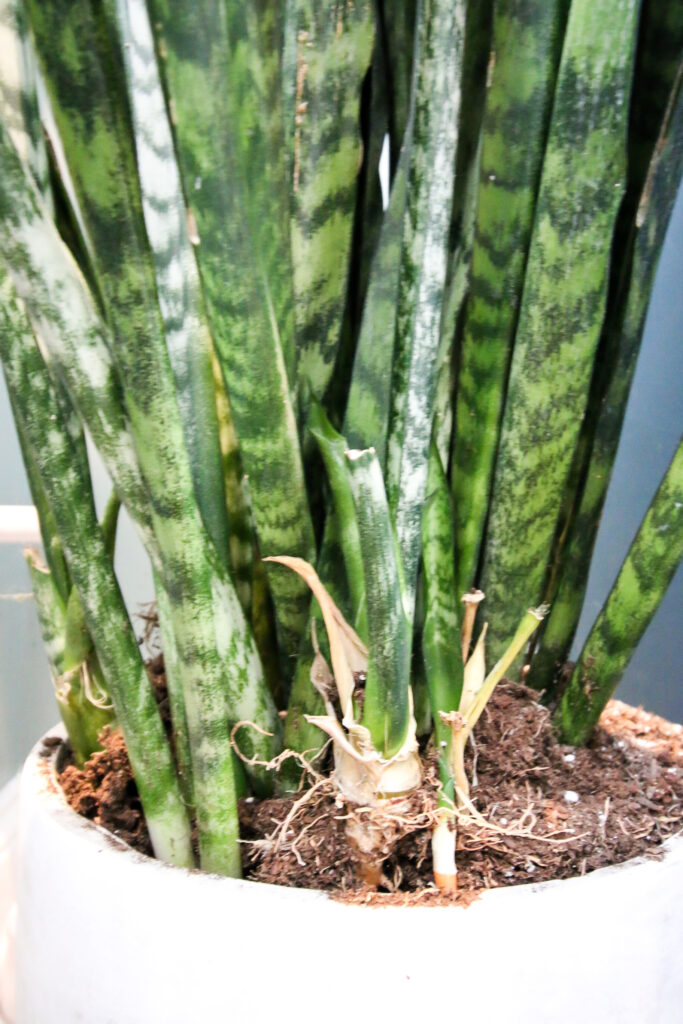
Should I Cut Brown Tips off Snake Plant?
Yes, it’s okay to trim off the brown tips of a snake plant leaf.
Some plant owners feel that these damaged edges look unattractive and are preventing the leaf from growing properly.
On the flip side, some horticulturists believe that by cutting off a portion of the leaf, you’d be leaving it with an open wound, making it prone to bacterial infections and fungal growths.
So, by leaving these delicate leaves open and vulnerable, you’ll be doing them more harm than good.
Plus, the tip won’t ever grow back, which means your plant will be left looking uneven and lopsided.
How to Cut Brown Tips?
If you do decide to trim, make sure you use a clean, sharp knife or shears.
Working slowly, cut about half an inch more than the damaged parts.
Try to cut at a 45-degree angle to give the appearance that the leaf wasn’t cut. Cutting at an angle also helps reduce the risk of an infection.
But if you're not keen on cutting, no worries! Just leave it be. The focus will shift to the new, healthy leaves as they grow.

How to Prevent Brown Tips from Spreading
Unfortunately, once the leaves have turned brown, there’s little you can do to revive the leaf.
What you can do, however, is trim the damaged parts so they don’t spread to the rest of the leaf.
If you’re feeling doubtful about cutting the edges, here’s another trick you can try:
- Snip off the leaf from the base of the plant as close to the topsoil as possible.
- Then, I recommend placing it in a new pot with fresh soil or water.
- Check out my guide on making your cuttings grow faster in water.
Remember, snake plants are hardy and quick to adapt. They'll bounce back with new, vibrant leaves in no time.
Once cut, the leaf will signal the rhizome to start producing new shoots, which will then develop into young, healthy, vibrant leaves.
Brown tips on Snake plant
You now know that brown tips on snake plants can be caused by overwatering, underwatering, too much sun, or too little moisture.
But don't stress; each of these is fixable with a few simple tweaks.
You also know that the answer to “Should I cut brown tips off snake plants?” isn’t so clear-cut.
If you decide to go ahead and trim the damaged area, you won’t be able to fix the leaf. Plus, you’ll probably be leaving your plant with an open wound, which can cause more damage to the leaf.
On the other hand, you can simply leave the damaged leaf as it is and wait it out until it’s replaced by healthy, vibrant, and fresh new leaves.
Before you go...
Download my free printable houseplant quickstart guide for more information on snake plants and other household plants.
Thanks for reading!


Hey there, I'm Morgan, a houseplant enthusiast from sunny Charleston, South Carolina. Growing up surrounded by my mom's lush orchids and African violets, I discovered the magic of bringing nature indoors. Thanks to the pandemic, I delved deeper into houseplants, discovering their power to uplift moods and transform spaces. I'm here to spill all my secrets, helping you pick the perfect houseplant - and make it happy. Let's keep your plants alive, together! 😊


